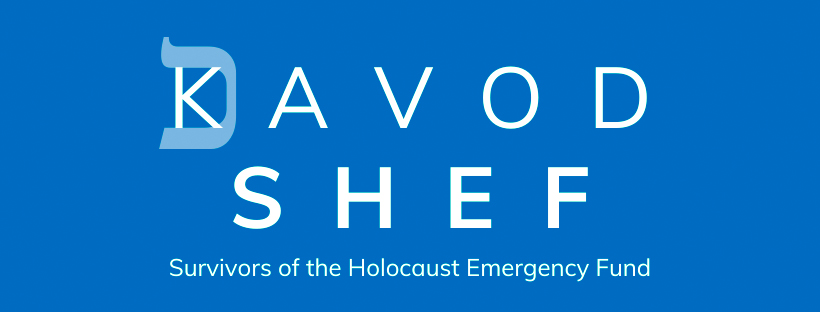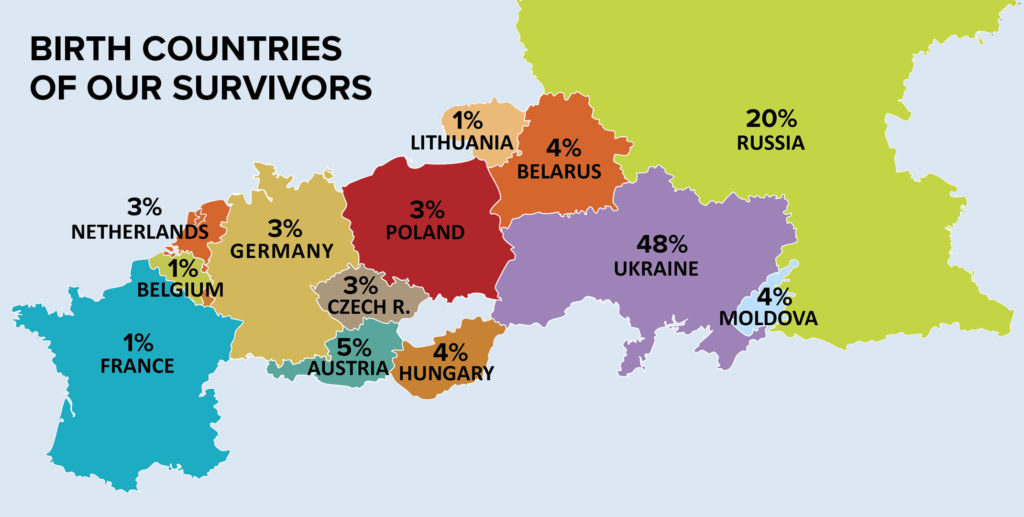Holocaust Survivor Community Fund:
Caring for Holocaust Survivors
Caring for Survivors means providing their personal care and also the work professionals around them must do to ensure and support such care.
Here is the impact your gift makes:
$7,500 Supports a Survivor for one year
The average total cost to care for a Survivor for one year is $28,000. The Claims Conference covers only 65% of the total cost. After the Federation of Greater Portland’s allocation, JFCS is responsible for the unfunded mandate of $7,500 per year, per client. That remainder must come from our community via fundraising.
60 of Portland’s 100 Survivors are certified, meaning they qualify for aging in place support services through the Claims Conference.
We need your help to take care of our community’s Holocaust Survivors and fund the following services:
$4,125 covers case management
Every day, bilingual case managers address the personal and home-care needs of our Survivors. They also research, analyze and complete reports that are required by the Claims Conference oversight process in order to maintain client funding.
$1,875 pays for personal care & housekeeping
Successful aging in place requires weekly, and often daily, assistance with bathing, feeding and hygiene, as well as cooking, cleaning and errands.
$1,000 supplies Direct Aid
Utilities, medical and dental bills, hearing aids, home-safety modification, air conditioners and more are provided by donors’ gifts. These gifts often are supplemented or matched by our foundation partner, Kavod SHEF.
$500 funds a Café Europa event
Virtual gatherings and a reboot of in-person support are critical for the physical and emotional well-being of our Survivors.
Some facts about Survivor clients
- The majority of our 60 Survivor clients live at or below the federal poverty level.
- Their average age is 85.
- As they age there is a substantial increase in the services needed for daily basics, such as dressing, toileting, bathing and grooming. JFCS also arranges housekeeping, and shopping.
- 80% of Survivor clients are from Ukraine or another country of the Former Soviet Union. Many don’t speak English and still have family overseas.
Some facts about JFCS’ Holocaust Survivor Services program
- For JFCS, the annual Claims Conference grant only covers 65% of what it actually costs to operate this service.
- The remaining 35% (this percentage varies annually) is considered by the Claims Conference to be our community’s responsibility.
- In other words, for every dollar received from the Claims Conference, JFCS and the community needs to raise an additional $0.35. This year, JFCS must raise approximately $7,500 per Survivor. This equals roughly an unfunded mandate of $450,000!
- Recently completed HSS actuarial analysis shows a notable increase in JFCS’ required subsidy starting in 2019 and peaking in 2024. (click here to view the actuarial table)

Social services for Jewish Nazi victims have been supported by a grant from the Conference on Jewish Material Claims Against Germany.
KAVOD SHEF (Survivors of the Holocaust Emergency Fund) is a partnership between nonprofits Seed the Dream Foundation and KAVOD to specifically assist with emergency funding for Holocaust Survivors living in poverty.
JFCS is so grateful to each and every donor to the 2023 $500,000 Renée Holzman Challenge Grant for Holocaust Survivors. Together, we raised a total of $1 million for the care of Holocaust Survivor clients! Renée had a passion and a vision, and your consideration of it and generosity toward Survivors ensured JFCS made the crucial match, all in the name of helping Holocaust Survivor clients continue to age in place and with dignity. Thank you.
For more about the Holzman Challenge Grant and the philanthropist behind it, read The Jewish Review’s article, “Challenge grant to aid Shoah victims.”

